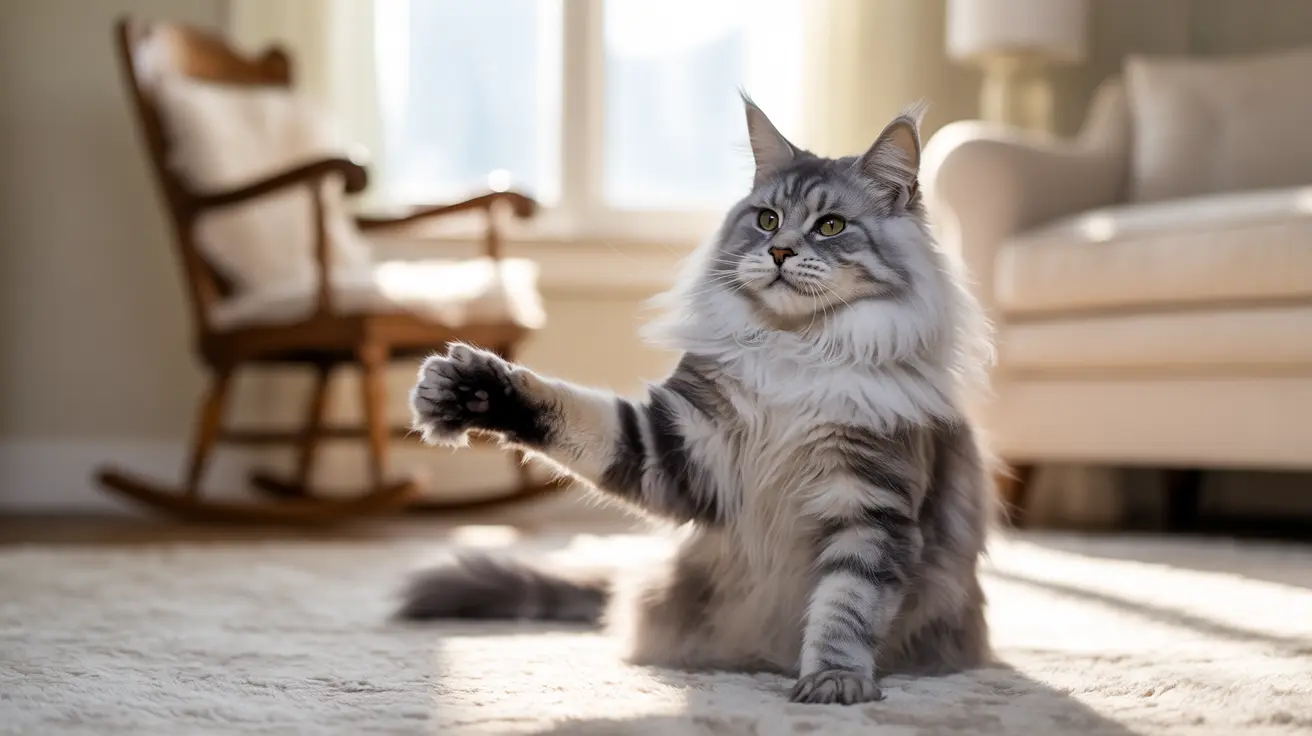If you've ever watched your cat skillfully bat around toys or grasp objects, you might wonder: do cats have thumbs? While cats don't have true opposable thumbs like humans, their paw anatomy is fascinating and includes some thumb-like features that help them navigate their world.
Let's explore the truth about cat paws, including the special case of polydactyl cats who appear to have "thumbs," and understand exactly how feline digit anatomy works.
Understanding Normal Cat Paw Anatomy
Standard cats are born with a specific number of toes: five on each front paw and four on each back paw. The fifth digit on the front paws, often called a dewclaw, is sometimes mistaken for a thumb but functions quite differently from human thumbs.
Unlike human thumbs, a cat's dewclaw isn't opposable and can't grasp objects the way we can. Instead, it serves several important purposes:
- Climbing assistance
- Prey capture
- Balance during quick movements
- Grooming aid
The Polydactyl Exception: When Cats Have "Thumbs"
While most cats don't have true thumbs, some are born with a genetic mutation called polydactyly, resulting in extra toes that can appear thumb-like. These special cats, known as polydactyl cats, can have up to seven toes per paw.
The extra digits in polydactyl cats often appear on the inner side of the paw, creating what's commonly called a "mitten paw" appearance. While these extra digits may look like thumbs, they still aren't truly opposable like human thumbs.
Genetics Behind Extra Toes
The polydactyl trait is inherited through an autosomal dominant gene known as the Pd gene. This means that if one parent carries the gene, their kittens have about a 50% chance of inheriting the trait.
Some fascinating facts about polydactyl genetics:
- The trait is more common in certain geographic regions
- Maine Coon cats have a higher prevalence of polydactyly
- The record for most toes on a cat is 28 (seven per paw)
How Cat Paws Function Without True Thumbs
Despite lacking opposable thumbs, cats are incredibly dexterous. Their paw anatomy allows them to:
- Climb vertical surfaces
- Maintain perfect balance
- Catch and manipulate prey
- Groom themselves effectively
- Handle objects with surprising precision
Frequently Asked Questions
Do cats actually have thumbs or opposable digits on their paws?
No, cats don't have true thumbs or opposable digits. While they have a dewclaw on their front paws that might look similar to a thumb, it doesn't function like a human thumb and can't grasp objects in the same way.
What causes some cats to have extra toes, and how many toes can polydactyl cats have?
Polydactyly is caused by a dominant genetic mutation. Polydactyl cats can have up to seven toes per paw, with the current record holder having 28 toes total.
Are certain cat breeds, like Maine Coons, more likely to be polydactyl?
Yes, Maine Coons have a higher occurrence of polydactyly, with approximately 40% of the breed showing this trait historically.
Does having extra toes affect a polydactyl cat's health or ability to climb and groom?
Generally, extra toes don't negatively impact a cat's health or abilities. In fact, some polydactyl cats may have enhanced climbing and grasping abilities due to their extra digits.
How is the polydactyl trait inherited genetically, and what are the chances a kitten will have extra toes?
The polydactyl trait is inherited through an autosomal dominant gene. If one parent is polydactyl, each kitten has approximately a 40-50% chance of inheriting the trait.
While cats may not have true thumbs like humans, their unique paw anatomy and occasional extra toes make them remarkably adaptable and capable creatures. Whether they're standard cats or special polydactyl felines, their paws are perfectly designed for their needs.






